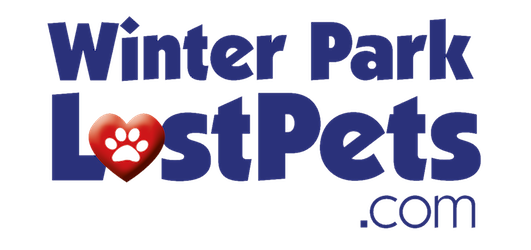Lost Cat Checklist
What to Do if You Have Lost Your Cat
Finding a lost cat is usually a lot harder than finding a lost dog. They are smaller; their first instinct for self-preservation is to hide and they are very good at it. They often move at night and are more adept at foraging for food. There are so many homeless cats roaming around that a lost cat does not attract much notice in the way a lost dog might. Worse still, even if your cat has a collar, those collars are made to break if they hang up, so often the life-saving information on the collar is left dangling on a bush. Therefore, it takes extra effort, ingenuity and patience to find a lost cat. It can be done, however. Many lost cats are found in this community, sometimes after months, and with the heightened awareness and utility of www.WinterParkLostPets.com, we hope many more will be returned to their homes. Here are some suggestions:
They may seek shelter in a garage, shed, under a porch, or in the highest tree in the neighborhood.
Watch this youtube video: https://www.youtube.com/watch?v=g2eCoC63B9I
Step 1: Thoroughly Search Your Yard, Home and Neighborhood
Pets can wind up in some strange and distant places and can also sometimes be found at home or nearby. In fact most pets are found within a 2 mile radius of their home. Check under porches, vehicles, in tool sheds, garages, drainage pipes and other small hiding spaces. Also look in and around major appliances, dumpsters, trash cans and boxes. If you have a cat who loves to climb, be sure to check all nearby trees. While you are looking, call your cat, or shout out something they may know like Dinnertime or Tuna! Be sure and listen. If a cat is trapped under or in something, the noise he makes could be faint.
If your at-home search turns up no clues, begin searching the neighborhood and calling to your cat. Knock on the doors of neighbors and ask if they have seen your missing friend. Pets have been found in neighbors sheds, under items in a carport, and garages, so ask that they look and listen for strange sounds. Also, neighborhood children can be very helpful in finding a lost pet.
In searching for a cat, think about the places he would most likely feel safe. If the pet is not normally outside, he may look for a dark quiet area away from traffic and other noises. If the animal is friendly, he may seek out other people. Many cats are frightened of strangers and may seek shelter in a garage, shed, under a porch, or in the highest tree in the neighborhood.
Step 2: Place a Lost Listing on www.WinterParkLostPets.com
Listings are free and remain on our website until you request their removal. Keeping in mind that not everyone is an animal expert, our notes section lets you be as detailed as possible in your description of the cat. Posting a photo of the pet will increase its chances of being reunited with its owner so please use this feature.Also, utilize the special feature of printing out a flyer of your lost pet from your posting.
We have the ability to send out email alerts when a new listing is posted which offers extra notification of your lost or found pet. The new listings are highlighted in red.
Check our LOSTAND FOUND pet listings daily. One of our features is a keyword search, which can be used to search by lost/found, type of pet (species), gender, color and breed. Please remember as you are checking listings, that people descriptions may vary drastically. For example, a tuxedo can be mistaken for a black and white cat. Not everyone is an animal expert, and not many people may even be familiar with a certain breed or coloring. If the cat could vaguely be yours, contact the person and inquire, it doesn't cost you anything and it could possibly make the difference in locating your cat. Click on the link to the right on the Home page to sign up for email alerts.
Step 3: Begin Placing Flyers around Your Local Area
Flyers are the number one method of finding a missing pet. Information on the flyer should be kept to a minimum. All that is needed is a picture, brief description and a phone number. The pet resources page has a template for creating this type of flyer. If you are offering a reward, there is no need to state the amount on the flyer. In fact, it is best not to put a dollar amount on the sign. Be sure to keep some specific details to yourself, such as the color of eyes or a scar. This will tell you whether a caller really has your cat.
Flyers on bright paper will catch people's eye. You will find many do-it-yourself print places to make copies of your flyers. Use indelible ink to prevent the type from rain. Once you have your flyers, gather together tape and tacks to place the flyers in many different locations. Keep a list of all the places you have placed your flyers.
It is important to remember that The City of Winter Park adheres to the Orange County Ordinance that does not allow flyers posted on street signs or poles; this is one of the reasons www.winterparklostpets.com was created to give you a place to get the word out.
Deliver your flyers door to door. Place them in local businesses such as your gym, coffee shop, grocery stores, liquor stores and gas stations.Always ask permission to post your flyers because many businesses cannot post flyers in their windows (but many will place them next to their cash registers). Postings should cover a 2 mile area where the cat was lost. If your cat is not found within a couple of days, expand the postings to cover a 4 mile radius. Local veterinarians (listing is on the pet resources page) and animal businesses usually have a lost pet bulletin board, where you can post a listing.
If your cat has his rabies tag on his collar, call the vet who gave him the rabies shot. Make sure they know that he is missing and verify that they have your correct address and phone number.
Step 4: Personally Check Area Shelters and Animal Control Facilities
Ifyourcatiswearingregistrationtags,youwillbenotified. However,registrationtagscanbecomelost.Collarsbreakaway.Youshouldcheckyourlocal shelter(s) at least once a day.
Animals can end up at shelters by being picked up by animal control officers or by someone finding your cat and taking him to the shelter.Animal Control and shelter lists are included in this kit. Check each one.
Ask each shelter about sick or injured animals, animals in quarantine or animals not yet placed in public viewing areas. Also bring your flyer along to assist the shelter workers in identification of your lost cat.
While most shelters and animal control facilities will keep an animal as long as possible, the law only requires that an animal without tags be kept for 3 days. Iftheanimalhastags,thisminimumtimeisextendedto5days. TheSPCAeuthanizeonafairlyregularbasisduetotheoverwhelmingnumberofanimals being turned in each day.Any organization may adopt your cat to another family or the animal could be turned over to a rescue group, so you need to physically check back with them at least every other day -don't wait for them to call you.
Keep in mind that most shelters are understaffed and face an overwhelming work load. Your cats description may match the first 50 cats that came in that day. Here is where a microchip makes a huge difference. If someone picks up your pet, they can contact a veterinarian and have the cat scanned. If your animal is turned in to a shelter, the shelter will contact you. This is another good reason to keep your cat registration information up to date.
If your cat is picked up by an animal control facility, you will need proof of shots (veterinary receipt, not tags). Also, ask if there is a discount for spayed/neutered animals who find themselves at the shelter for the first time.
Another detail to think about when looking for a lost cat: Lost cats have been known to travel many miles before being located, just as Lucy was lost in Winter Park and found near the airport. Just because an animal is lost in one area, doesnt mean that he will not turn up 20 miles away. Also, if a person finds your cat and cannot continue to hold him, your cat will be dropped at the most convenient animal facility. Check those as well.
Step 5: Place an ad in the Orlando Sentinel
Advertise your lost cat in the Sentinels LOSTAND FOUND column of the classifieds. Please call 1-800-669-5757 to place your ad.The cost of the ad is FREE for a found cat. Lost pet ads range in price from $26.25 to $52.00 for and run in the newspaper for 5 days and online for 7 days.
You can also post a lost or found cat on the Sentinels website. http://www.orlandosentinel.com/classified/
You must register first to use this service. Check the paper and website every day!
Step 6: Place Items Outside to Attract Your Pet
Familiar items, such as a bed or favorite toy, can attract your cat. Favorite smelly foods can also bring your pet home if he is still in the local area. Of course, you may also attract the rest of the neighborhood creatures, but thats a small price to pay to have your best friend back safe and sound.
Step 7: Continue Searching
Canvass your neighborhood several times each day. Carry your flyers with you. Hand out the flyers and question neighbors, kids, joggers, postal carriers, garbage collectors, newspaper carriers, delivery people, everyone. The drivers for UPS and Fed X have been very helpful to the people of Winter Park who have lostapet.Askiftheywilltakeaflyerandbeonthelookoutforyourpet.Manycityworkershaveopportunitiestoseealostpet letthemknowyouhavea missing cat.
Don't Give Up
Keep searching even when you have little hope left.Animals that have been lost for months have been reunited with their owners. Shy animals may take longer to find because someone has to be able to catch them first. Remember Lucys story the Lundys never lost hope.
Play it Safe
YournameandaddressshouldNOTappearonyouradvertisements;somepeoplealsosuggestthepetsnamenotappearaswell. Ageneraldescriptionanda phone number that is answered in person or by voicemail are the only necessities.
Leave some important details out of advertised information, such as two different color eyes, six toes on a left front paw, etc. When someone calls saying they have found your pet, ask them questions about those details. Leave your questions open ended, such as what is the fur like? What color are its eyes? What does the tail look like?
When knocking on doors around your neighborhood or when answering a found ad in person, take along a friend and meet in a public place.
If you are offering a reward, whether it is for the finder of the pet or information leading to the return of your cat, do not pay the reward until your cat is in hand.
Acommon scam that has been reported in other cities is for a person to call you about your missing pet and request money for his safe return. It is common for the person to claim that he/she is a trucker. He may say he found your pet on the road and picked it up, now he is in some distant town and needs money to send the pet back. The Winter Park Police suggest you do not fall for it; this person does not have your pet and will not be able to tell you specific details about your pet. Turn the persons information over to the Winter Park Police Department immediately.
If You Have Out-of-Date ID Tags
If your pet's ID tags have an old address and phone, contact the people who now live at that address and let them know your pet is missing and give them your current information. Check back with them occasionally, in case they lose your information. In case of an old phone number, contact your carrier to see if they may assist you. If it is an old landline, they may be able to help. If it is an old cell phone number, call it and if it has been reassigned, let that person know about your lost cat and how to contact you should they receive a call.
Dead Animal Retrieval
It is an unfortunate fact that some missing animals wind up as accidental fatalities. Most animal control units in the area will contact an owner if the victim has tags or a collar with information on it. In the City of Winter Park, Orange county and Seminole county animal control handles this matter. Please contact both for this information (listing is on the pet resource page).
When Your Cat is Found
Remove your flyers.
Contact www.winterparklostpets.com with your success story!
Protect your cat from getting lost again.Always keep a collar and current ID tag on your pet -even if he is an indoor only pet! Have your cat microchipped if collars wont work.
Microchips have proven to be a successful factor in reuniting a lost cat with its owner when it is not wearing an identifying collar or tags. Make an appointment at your vet or a clinic to have this done as soon as your cat is returned to you.
Have your cat spayed or neutered. This keeps them from wanting to stray. Contributed in part by Jackie G. Winter Park, FL

Cofounder and Sponsor

Shelley Heistand
Premier Sotheby’s International Realty
407-718-9222
Cofounder Executive Director

Judy Charuhas
Contact Judy here

